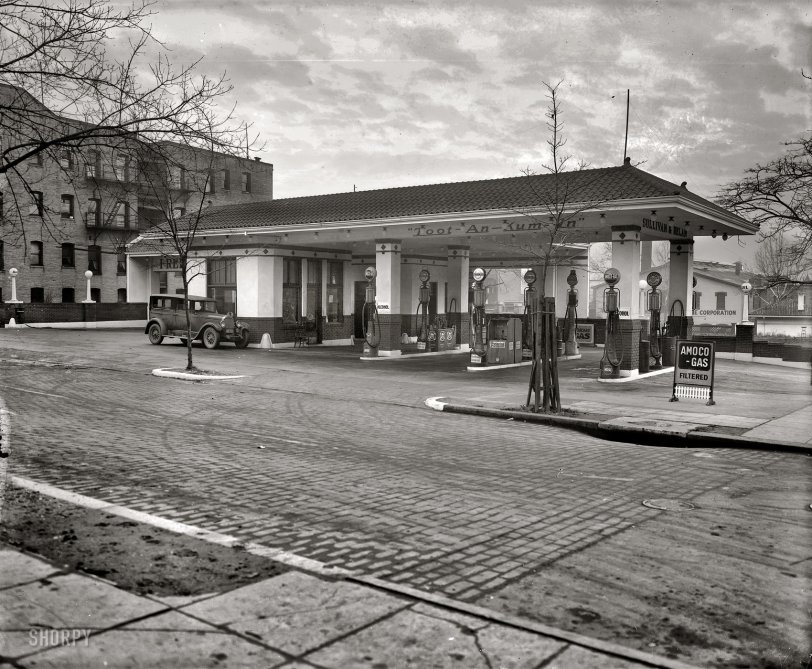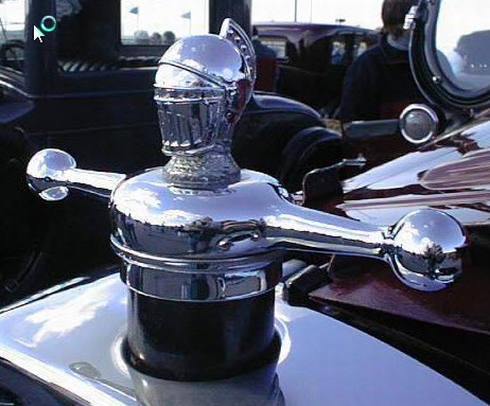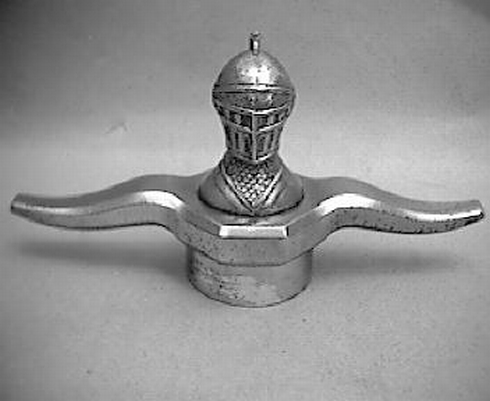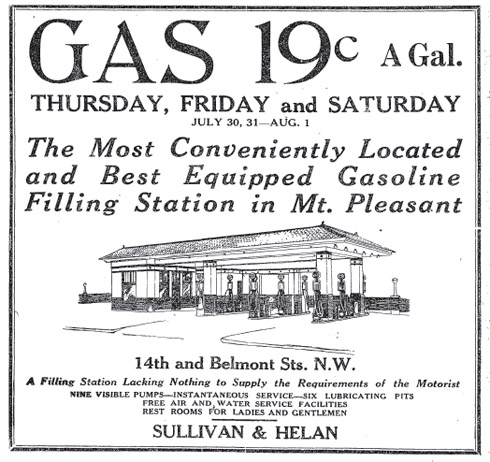


Framed or unframed, desk size to sofa size, printed by us in Arizona and Alabama since 2007. Explore now.
Shorpy is funded by you. Patreon contributors get an ad-free experience.
Learn more.

- Details, Details
- What's that building to the left of the tower?
- Coal Barges
- Bromo-Seltzer
- Inner harbor
- The Basin
- What a headache!
- Giant stepladder?
- Baldwin 62303
- Baldwin VO-1000
- Cold
- No expense spared
- Tough Guys
- Lost in Toyland
- And without gloves
- If I were a blindfolded time traveler
- Smoke Consumer Also Cooks
- Oh that stove!
- Possibly still there?
- What?!?
- $100 Reward
- Freeze Frame
- Texas Flyer wanted
- Just a Year Too Soon
- WWII -- Replacing men with women at the railroad crossing.
- Yes, Icing
- You kids drive me nuts!
- NOT An Easy Job
- I wonder
- Just add window boxes
Print Emporium
Toot-an-Kum-In: 1925

"Texaco Co., Sullivan & Helan station." This Amoco station at 14th and Belmont streets N.W. in Washington's Mount Pleasant neighborhood opened in July 1925. After the discovery of King Tut's tomb, the vogue for all things Egyptian extended even to gas stations. National Photo Company glass negative. View full size.
A Knight Before Its Time
This is a 1925 Model 66 as the 1927 version wasn't produced for another two years.
The identifying feature between the two years is the three groups of horizontal hood louvers on the 1927 instead of one large group of vertical louvers as shown in this photo.
The 1925 Model 66 had a 126" wheelbase and a new 236.4 cubic inch displacement engine that produced 60 horsepower at 2800 rpm. Tires were 32 X 6.20.
Note the distinctively shaped horn below the left headlight that mimicked the shape of the headlights.
The radiator mascot would have looked like one of these pictures.


Great Six
The car pictured is a Willys Knight Great Six Model 66A. This model was introduced for 1927 and produced into the opening months of the '29 model year when it was replaced by the sleeker Great Six Model 66B. Willys Knights appealed to those who wanted a car that was a bit more innovative and stylish than, say, a Buick or a Studebaker.
Notice the headlamps in the shape of shields.
During most of the 1910s and '20s Willys Overland was among best selling marques in the United States.
They are a lot more reliable
DIY for many years, my experience is that current OBDII cars are far more reliable and easier to diagnose and fix than were the timing light, points, carbureted Detroit Iron creations. The computer tells the source of the trouble. Find and replace is usually straightforward and not expensive. Maybe you need a new mech.
"they're also a lot more reliable"
I've spent sufficient hours peering at a spinning drive pulley, timing light in hand, to appreciate your point Dave.
Nevertheless, when a new car does go wonky, I do miss the ability to do something about it myself, rather than turn it over to a mechanic who can do little except swap out black boxes (at a cost which may be hundreds per box) until he hits the right one.
[True. Although if it's a new car, I'd think getting something like that fixed wouldn't cost anything. Of all the black-box cars I've ever owned, not a single one has ever gone wonky. Knock simulated wood. - Dave]
Re: Six Lubricating Pits
You're right on with modern engines. 60,000 miles was pretty well the limit (according to my dad back then) and an "engine job" would be needed soon! Oil changes every 3000 miles, filter at 6000!
"Six lubricating pits"...
...in a neighborhood gas station is a telling comment about routine maintenance needs of 1920's cars. Anyone in their sixties and up remembers when valve jobs and piston ring replacements were normal even on a well-cared for car, and a "lube job" was almost of steam locomotive complexity.
If only we could buy a car built with 2000's metallurgy and 1950's engine design simplicity.
[Modern car engines may be more complex, but they're also a lot more reliable and much easier to maintain. At least in my experience with cars of the 50s to the 00s. - Dave]
Mount Pleasant
That's sort of Columbia Heights rather than Mount Pleasant. Or it could technically be the U Street neighborhood. Mount Pleasant is a bit more north than this location.
[Or maybe not. - Dave]

Amocar
The car is most probably a 1925 or 1926 Buick.
Not a Packard
The car in the photo isn't a Packard; it may be a Willys-Knight;
I'm guessing on that, but I am sure it isn't a Packard.
Texaco?
The caption says "Texaco Co., Sullivan & Helan station," but the gasoline is Amoco. Were Texaco and Amoco the same company in 1925?
[The National Photo captions often start out with the name of the client who commissioned the photo. A lot of the gas station photos are labeled "Texas Company" or "Texaco" regardless of whether they show a Texaco station. - Dave]
Kame-an-Went
The Toot-an-Kum-In may be gone, but the apartment building behind it is still there, an empty shell:
[Yikes. Spooky! I'm not sure if this is the same building though. It doesn't quite match. - Dave]
Packard
The car in the picture appears to be a Packard. Also, filter gasoline is healthier than unfiltered gasoline, isn't it?
























On Shorpy:
Today’s Top 5